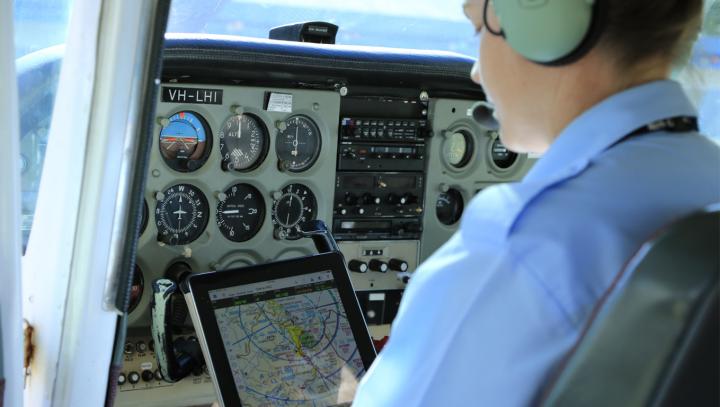Your tablet has become the go-to solution to simple, easy navigation. But only if your tablet:
- carries adequate charge
- doesn't overheat
- mounted
- stored legally
- doesn't malfunction just for the heck of it.
Regardless of rigorous testing, an EFB in the form of an tablet is just like any other mainstream electrical product and can fail without notice.
Make no mistake, the EFB is an outstanding tool which can:
- lighten a pilot's workload
- increase situational awareness with the excellent flight planning and weather software available.
Just keep in mind not to depend on your tablet functioning flawlessly. It's a seriously bad idea to rely on it without backup.
It is more than a little concerning to see the blind faith in EFBs by pilots. In fact, it is not uncommon to hear GA pilots boast that they no longer carry a single paper map in their cockpit. Good luck with that if both your tablets decide to call it a day without notice.
What's your plan B? If you're now looking at a black screen where you saw useful information a few seconds ago, things can turn dangerous quick.
Electronic flight bag
What is the legal requirement for a backup to my EFB?
For AOC holders, a backup is mandatory. It is at the operator's discretion whether the backup is another EFB, or hardcopy charts, maps and documents. You can find these requirements in the regulatory part relevant to the AOC operation.
There are no formal requirements for Part 91 operations. But you should address the backup and or redundancy provisions. This makes sure crew retain access to all required information in the event of an EFB failure in flight.
An electronic device such as another tablet is an acceptable backup. During private operations, pilots can use tablet devices as a primary means of in-flight documentation. This is as long as the documentation is from an authorised source.
For example, let's say you want to use a software function for the display of instrument approach procedure charts or visual navigation charts. In this case, the software provider should hold an approval under Part 175 of CASR.
Using apps
That brings us to the growing prevalence of unapproved apps that are now available for your tablet.
Despite the wide range of tempting and often free choices on offer to pilots, only CASA approved can provide the software required by the regulations. This includes rules such as the latest versions of the maps and navigational charts for the sector you are flying in.
Vendors approved under Part 175 of CASR can publish aeronautical maps and charts. You also need to be across the rules in place regarding your tablet's screen size, mounting set-up, cabling and stowage area.
AC 91-17 shows the recommended minimum size of the EFB screen is 200 mm measured diagonally across the active viewing area:
AC 91-17 Electronic flight bags (PDF, 660.19 KB)
The idea is to avoid excessive scrolling and pinching while using the device.
Pilot using a tablet in a coockpit of a stationary aircraft
Overheating devices
The notion of a lithium-powered device overheating in a small cockpit is enough to ring alarm bells for anyone involved in aviation.
Keep in mind that the temperature you are experiencing in the cockpit may be quite comfortable.
EFB tips, tricks and advice
There is no doubt that the EFB has made the job of pilots easier. But there are far too many pilots, particularly within GA, who remain ignorant of the tablet's potential shortcomings.
If you are in IMC and your tablet fails, there's no way you will have the luxury of waiting until the device comes alive again. You need to have readily accessible charts, digital or paper, from approved vendors.
By 'readily accessible', this doesn't mean wedged somewhere within a mountain of paperwork under the back seat. Ideally, you should fold the charts to display the current flight route.
If necessary, you should also have the appropriate approach plates within easy reach. On a single pilot VFR flight, you may even find it useful to share the load of navigating with your passenger.
Perhaps you will be using the tablet and your passenger can keep track of your progress on the paper chart or vice versa.
This keeps the passenger interested and engaged with what's going on. It's also a great idea to cross-check a location on two sources. This is helpful if you're not certain of a positive position fix.
Your EFB must pass the ramp check too. A CASA inspector might ask to see your maps if you are on the ramp. You need to have backup/redundancy provisions if your tablet has a flat battery (without backup). This helps make sure crew retain access to all required information when an EFB failure might occur in flight and during pre-flight preparations.
By all means, embrace the technology and capabilities of the EFB to lighten the workload in your cockpit. Just be aware of its limitation. Be ready to set your plan B into action at a moment's notice if the show suddenly stops mid-flight.



